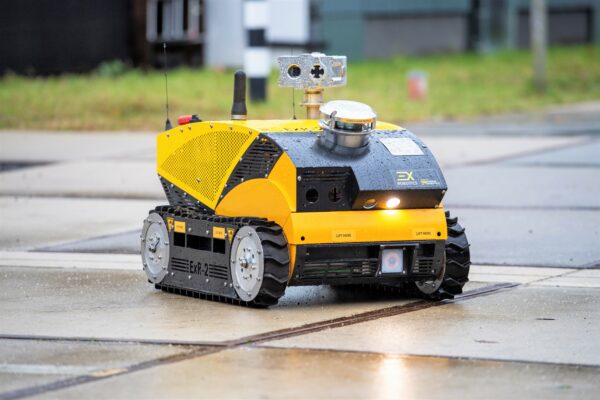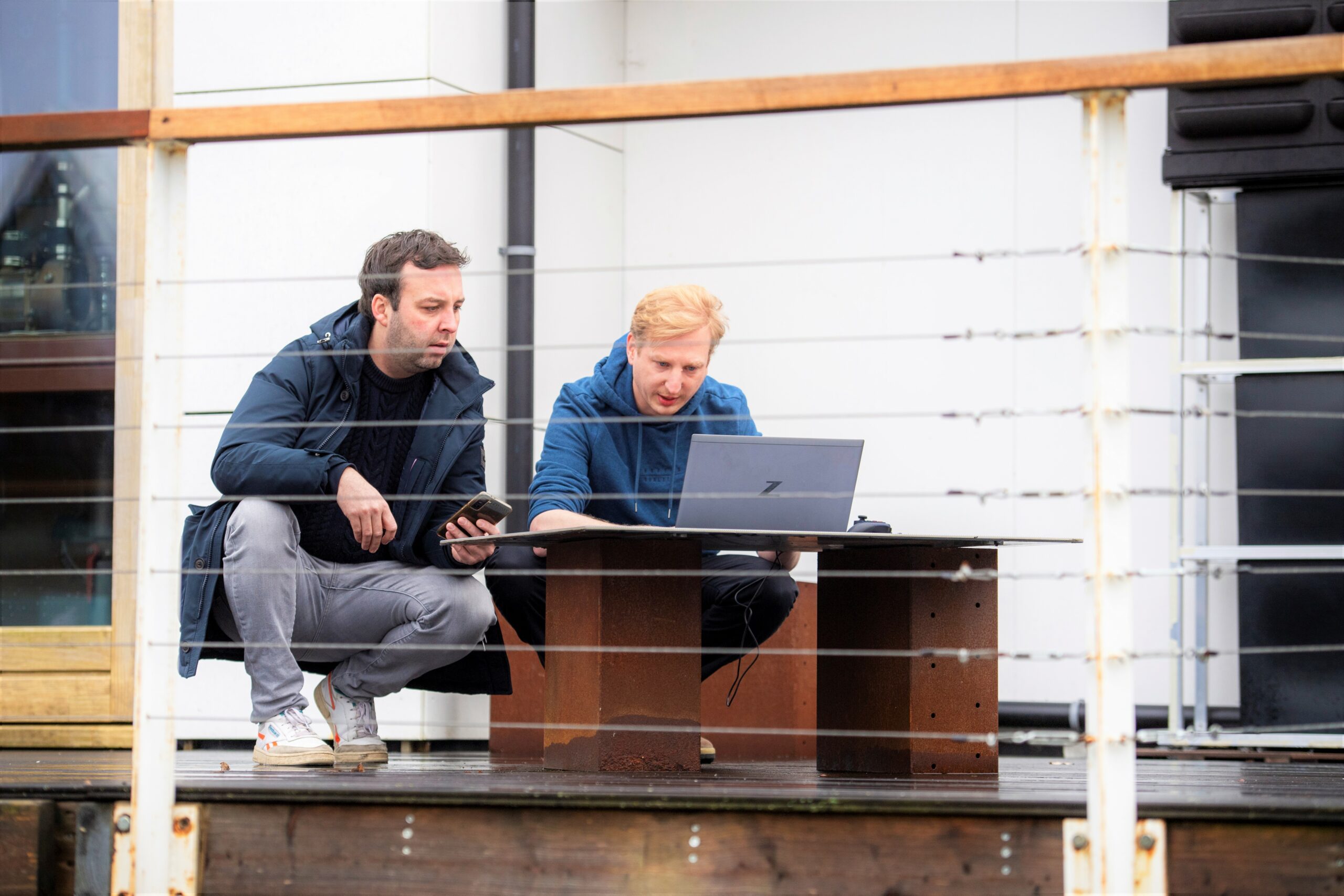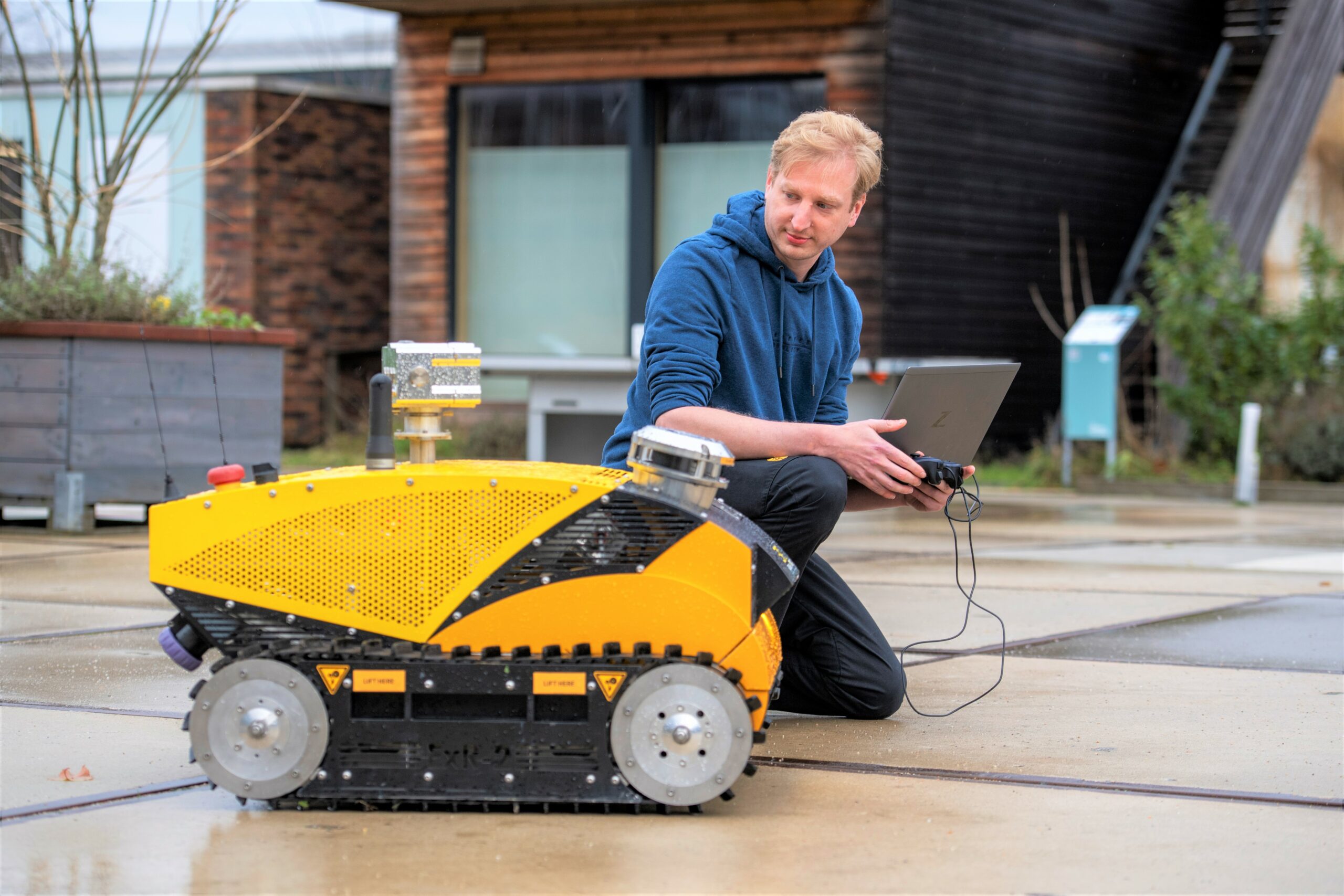Robots are increasingly being used for tasks that are too difficult, too heavy or too dangerous for humans. One of these is the robot developed by ExRobotics: it is equipped with cameras and sensors to perform inspections in hazardous environments. Very valuable for the petrochemical industry. The next step is to have the robot working with 5G technology and – crucially – to obtain once again the most stringent safety certification with this technical adaptation.
Together with Do IoT Fieldlab, ExRobotics embarked on the high-tech exploration, using our 5G testing facilities on TU Delft Campus. According to Iwan de Waard, director of ExRobotics, it is essential to invest in new technology. “Few SMEs are likely to have an entire team of engineers or an entrance to the Dutch research institute TNO for expert advice. Through the field lab you get access to all kinds of knowledge and expertise, as well as an environment where you can perform tests. I particularly like the tailor-made approach: you can specify exactly what you want to test and the team contributes ideas. It is a great pleasure to pioneer with 5G technology. For example, what is the relationship between the shape of the antenna and your connectivity and upload and download speed? Within the field lab we have the opportunity to try out new features and measure them effectively.”
The robot can detect hazardous gases and creates an image of the environment, which is stored in a digital twin. This requires enormous capacity in terms of image processing and data exchange. With current robots that operate with 4G, the images are stored temporarily and transferred once in a while to an employee of an oil platform, for example. It would be hugely beneficial to achieve this greatly faster with 5G. Part of the research focused on determining exactly what speed can actually be achieved. Large industrial companies would benefit from immediately knowing where a leak is located and how much risk it might cause. The faster they can make this assessment, the better they can act accordingly.
Heat
The research included tests with edge computing: processing data locally instead of in the cloud. Iwan: “If a sensor generates so much data that it cannot be processed via 4G, we now understand how to solve this via a private 5G network. In other words, I can resolve the slightest latency. And that, of course, is essential when using our robot.” In addition to testing data transmission, there are also practical challenges in meeting stringent safety requirements. For example, the heat produced by a modem, Iwan explains. “Normally you would incorporate a fan so that equipment doesn’t get overheated. In an explosive environment with hazardous gases, this is not an option. So we are limited in terms of what we can do. Then, how do we cool the modem? The experts also think along with us in that respect.”
Pascal Heijnen, Senior Consultant 5G and IoT at TNO, explains what his focus was in this research. “We tested the robot at Do IoT Fieldlab with a built-in 5G modem and SIM card. This would not work in foreign countries at the moment. With a SIM card from a Dutch telecom provider you can get a connection via roaming, but the data traffic is always processed through your home country. As a result, you cannot use the benefits of a 5G network, such as the high bandwidth and low latency.”

Differences
In order to deploy this robot internationally on oil platforms and refineries, differences in network infrastructure in the various countries must be taken into account: private, public and hybrid. Pascal: “We wanted to show a proof of concept, namely to test the prototype in practice and discover what the bottlenecks are, so as to solve them in the future.” Therefore TNO investigated which variants for Non-Public Networks (private networks) in combination with public network providers are possible.
“The 5G network as required for this robot is not yet available in the Netherlands,” Pascal explains. However, Do IoT Fieldlab’s private network offers the opportunity to already investigate how we can apply future use of specific functions. Such as ‘slicing’, which creates a demarcated private 5G network, specifically for a particular user. Highly promising, and certainly useful for ExRobotics, but there are still many technical developments in 5G that need to be put into practice. Though 5G antennas are available, the other parts of a network (for example, the core that processes digital information) are still 4G. Which will still make things run too slow.

Advantage
ExRobotics reflects positively on the experiment: “We were able to try out many existing features, which are not yet available over public networks. The research has now been concluded, but we are trying to keep going. Our robot is stationed at TU Delft Campus. This cuts both ways. On one hand I can give demos to future customers using 5G and on the other hand the robot is available to scientists and students. Recently, at a networking meeting, I came into contact with the Haagsche Hogeschool (The Hague University of Applied Sciences), which is also based at TU Delft Campus. This opens up new possibilities. Come to think of it, we might be able to set up a research initiative students from both universities. This would benefit all parties involved. Very interesting!”
TNO states that the way is open for further cooperation, after this useful learning experience. Pascal Heijnen emphasizes, “I believe it’s important to maintain a leading position with our knowhow of the most advanced network technologies. We gained extremely useful knowledge. It was great to figure out the key solutions for a customer’s use case. Exploring with 5G is not only interesting for major companies, but particularly useful for SMEs. You can test in a relatively basic way, you get expert guidance from Do IoT Fieldlab and have a private network at your disposal to which we can add all kinds of functionalities. That’s absolutely not feasible with public networks, which won’t have these funcationalities available in the next couple of years. So it’s smart to jump in now: make sure your application already works with 5G. That gives you a head start on the rest.”

More information
Want to know more?
- Read our project page.
- Check out the TNO report performed on 5G private networks. It provides an overview of deployment options and implementation considerations for enterprises.
- The research partners involved were: ExRobotics, TU Delft, The Green Village, TNO, FMI ImProvia Group, MCS
- This research was co-funded by the Dutch Province of Zuid-Holland and SMITZH, and supported by InnovationQuarter.

